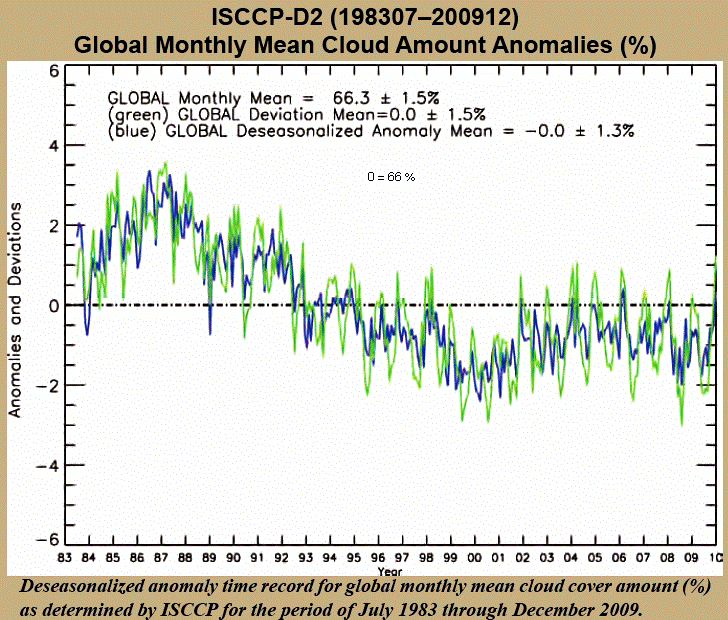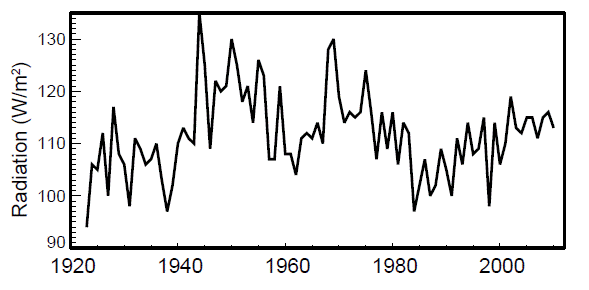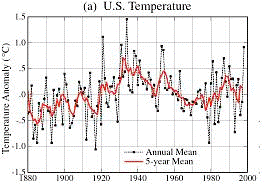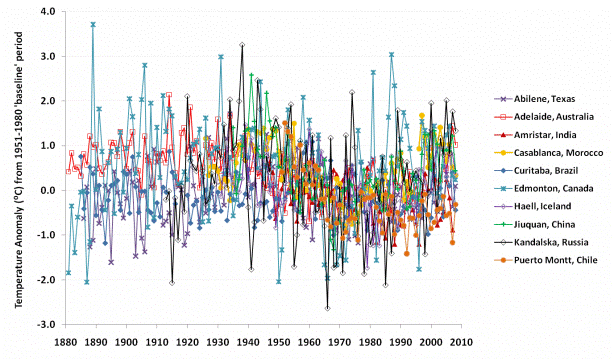However, for the first time in the history of the IPCC reports, the 2013 AR5 report discusses the Surface Solar Radiation (SSR) as a decisively important factor (chapter 2.3.3.). Decisive for the climate and temperature changes is not the solar irradiance at the edge of the atmosphere, rather it is the amount of solar energy that makes it to the Earth's surface.
Between the Earth's surface and the outer edge of the atmosphere we have the atmosphere with its clouds and aerosols, which determine how much solar radiation eventually reaches the surface of the Earth. Since 1983 the International Satellite Cloud Climatology Program (ISCCP) has been measuring global cloud coverage. One spectacular result was the decrease in global cloud cover between 1987 - 2000, from 69% to 64%, i.e. precisely during the period of warming that triggered the CO2 hypothesis.

Of course this finding did not fit well with the current popular narrative and was immediately criticized and doubted. This prevented it being adopted by the IPCC report of 2007. Indeed cloud observation and the evaluation of the data from satellites are difficult and the results are subject to interpretation. But in the meantime we have recognized that there is an objective method of determining the effects of clouds and the impact of solar dimming: by measuring the effective solar radiation at the surface of the Earth. For the first time this is discussed in the new IPCC report in Chapter 2.3.3 and is confirmed by the longest existing dataset from Stockholm. It shows a clear fluctuation of solar energy between 90 and 135 W/sqm. And the range is considerably greater at lower latitudes.

The SSR curve correlates excellently with the original GISS dataset for the US temperature history in 1999, before it was tampered with.

Already the temperature rise of 0.6°C between 1910 and 1940 cannot be explained by the CO2 effect because the CO2 concentration increased by less than 10 ppm during the period (from 298 to 307 ppm). Then from 1940 to 1975 the temperature fell 0.2°C - and certainly not because of a CO2 drop. The renewed temperature increase of 0.6°C from 1980 to 1998 was the initiator of the CO2 hypothesis. However, the temperature increase can be better explained by the increase in SSR intensity. The fact that the predicted continued temperature increase never materialized, and that there's been a slight drop since 2000, completely contradicts the CO2 hypothesis.




Reader Comments
to our Newsletter